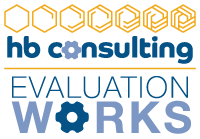Four Ways Leaders Can Build Team Resilience


Holly Burkett, PhD, SPHR is an accomplished executive coach, speaker, author and principal at Evaluation Works.
As the future rushes toward us at dizzying speeds, teams today need to be more resilient than ever before. Resilience helps teams adapt to constant change, pivot quickly, stay motivated and not just weather challenges or adversity, but grow stronger in the face of them. Apple CEO Tim Cook identified resilient, high-functioning teams as an essential part of the company’s ability to navigate the pandemic and achieve 2020 Q4 earnings that exceeded Wall Street’s expectations.
While most organizations recognize that resilience is needed to not only survive but thrive in an age of disruption, resilience remains in short supply as individuals and teams continue to struggle with prolonged worries about health, safety, job security and global unrest. These struggles have led to accelerating rates of burnout, anxiety and exhaustion, which then make it more difficult for teams to concentrate, finish tasks or juggle responsibilities.
So how can leaders help reduce the damaging impact workplace stress and burnout have on their teams and their organization? While there are many practices that foster resilience, here are key areas for getting started.
Create a safe place.
A psychologically safe space is one where teams can share questions, concerns, ideas, mistakes or even failures without undue repercussions. Psychological safety inspires trust, promotes innovation and risk-taking and allows teams to speak freely about performance challenges caused by pandemic stress or burnout. It also leads to increased engagement and a 12% increase in productivity according to Gallup research. To encourage open expression and demonstrate a tolerance for risk or failure, some leaders include a “blunder of the week” on meeting agendas where both leaders and participants share their biggest foul-up of the past week, along with what they learned from it.
Emphasize continuous learning.
Teams that learn better and faster are more able to adapt to dramatic changes in how they work, where they work and who they work with. Foster resilience by encouraging teams to continually add knowledge, share information, develop skills, ask questions and maintain an open “growth mindset.” Model the way by taking an active role in developing team talent, providing meaningful stretch challenges, offering flexible and personalized career paths and serving as a mentor or coach. WD-40s award-winning CEO, Garry Ridge, said “Leadership is about learning and teaching.” With over 90% of organizations expecting to have critical skill gaps over the coming years, continuous learning is essential for the upskilling, reskilling and change capabilities needed to drive business forward.
Foster collaboration and connection.
In a truly collaborative team, everyone has a voice, everyone can contribute and everyone understands how their contributions connect with a shared purpose. This sense of connection, contribution and purpose translate to higher levels of team engagement, productivity and resilience. Yet as teams become more scattered and workloads expand, routine connections and support systems are breaking down while isolation, loneliness and burnout are ramping up to epic proportions. To buffer stress and grow resilience among remote, dispersed teams, leaders must get more intentional about building connections and fostering inclusion. This includes:
• Defining what collaboration and inclusion look like in daily practice
• Demonstrating how to seek out and embrace diverse perspectives
• Creating mechanisms for teams to resolve conflicts, provide feedback and make decisions
• Providing ways for teams to recognize the collaborative efforts of their peers
Practice empathy.
As teams continue to experience unprecedented stress related to how their lives and work have been upended by the pandemic, the need for empathy has never been greater. Central to this issue is the problem of heavy workloads. As companies scramble to scale up for increased demand, teams across all industries and locations say they are overwhelmed with work, meetings, family distractions and household needs. As a leader, be sensitive to pain points. Facilitate listening sessions or “coffee talks” on difficult topics. This is especially important since only 21% of employees (download required) say they are able to openly discuss burnout with their manager. Conduct periodic “temperature checks” during meetings to assess energy levels on a scale of one (low) to five (high). Allow time to recharge. Show flexibility with deadlines and deliverables by focusing on the vital few priorities. Finally, take time to understand the signs and symptoms of burnout — for both yourself and your teams — and how you can best reduce the risks.
In short, cultivating resilience isn’t just a nice-to-have, but a business imperative for any organization in today’s volatile and uncertain environment. Organizations and teams need resilience to:
• Maintain stability and focus despite disruptions
• Adapt and not only bounce back, but bounce forward from crisis
• Create the kind of positive disruption that drives innovation and growth
Practices promoting a resilient workforce can contribute to significant bottom-line impact through increased productivity, lower absenteeism, lower health care costs, increased job satisfaction and decreased turnover. While there is no quick fix for building team resilience, now is the time to double down on resiliency efforts. Teams are looking to leaders for positive support, motivation and guidance. Leaders can begin tipping the scale by showing up as visible advocates, coaches and role models for the mindsets and behaviors associated with resilience. Ultimately, resilient teams are built by resilient leaders who have the self-awareness, commitment and compassion to manage their own resilience while staying attuned to the energy and well-being of those they lead. How are you showing up as a resilient leader?
Forbes Coaches Council is an invitation-only community for leading business and career coaches. Do I qualify?
